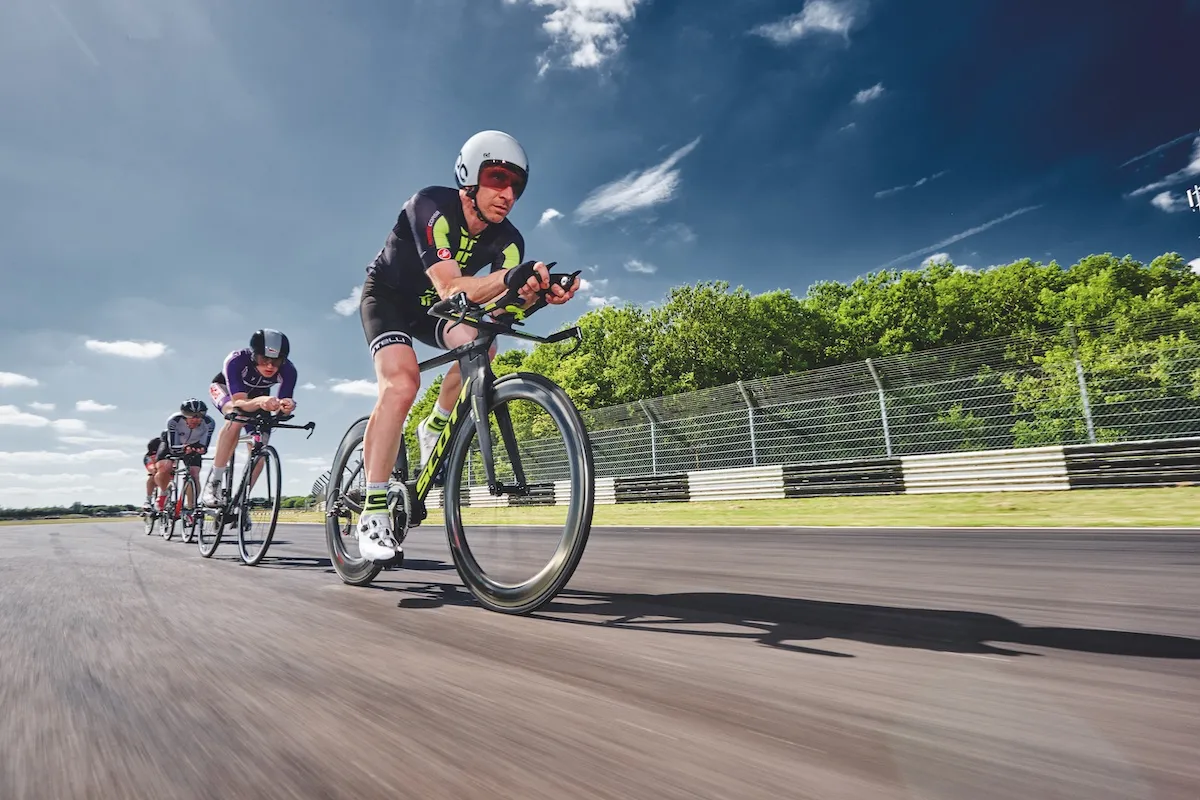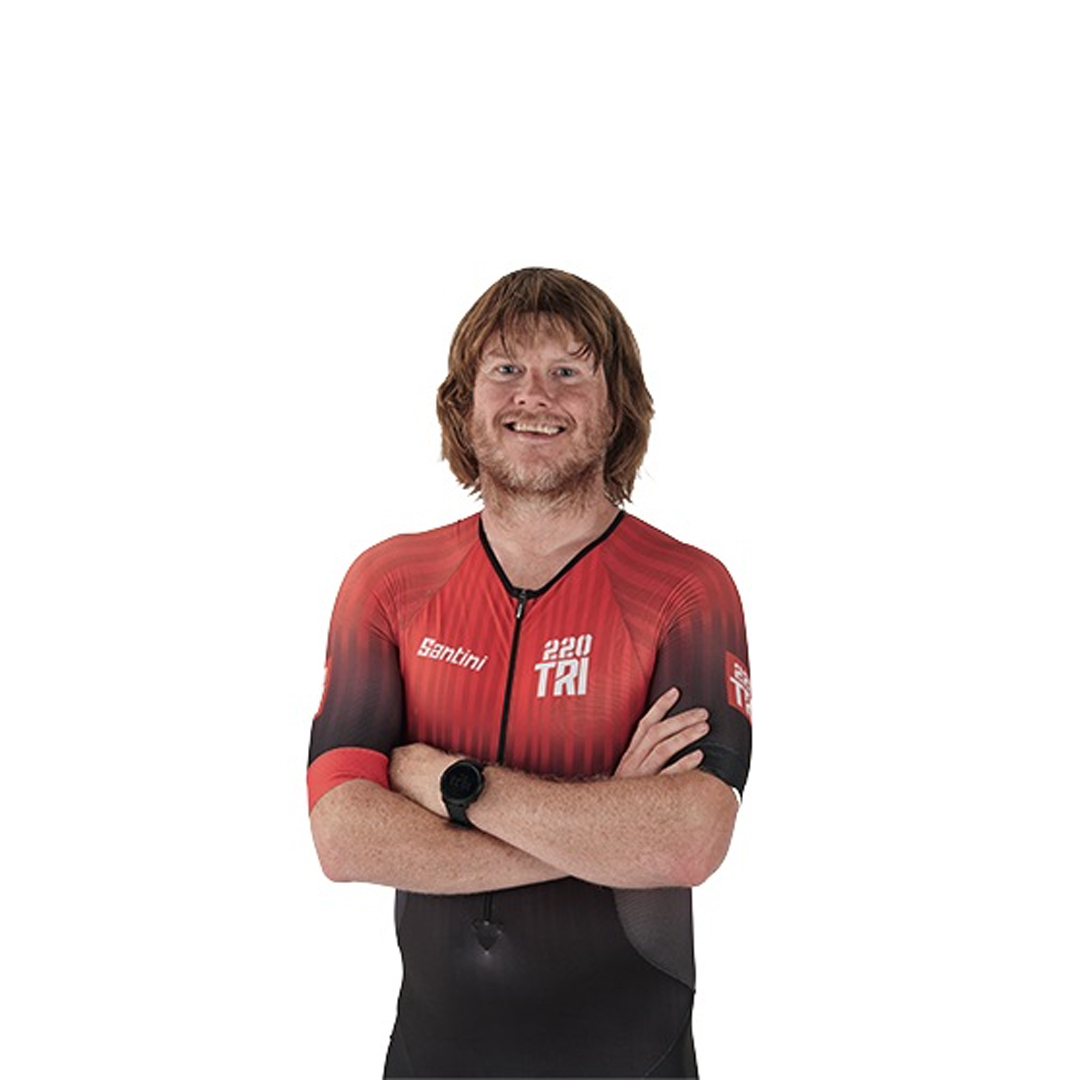Time trial (TT) is known rather formidably as the ‘race of truth’. It’s you and your willpower against the clock.
You may have seen time trials happening near you – usually spotted by fast folk on bikes and lots of marshals but uniquely everyone rides alone and there’s no drafting, either, which sets it dramatically apart from mass-participation rides or ‘sportives’.
Which all combines to make time trial superb training for your multisport season.
What is time trial and how can I get involved?
Time-trial races run regularly from April through to early autumn, either on a midweek evening or at the weekend. That makes them a practical choice for many.
According to the sport’s governing body, Cycling Time Trials, there are two types of event: club or open.
“Whichever type of time trial you’re entering, club or open, you must be a member of a club that’s affiliated to Cycling Time Trials,” reads their website, which is also the place to start searching for events near you.
“Entry to club events is usually just ‘entry on the line’ on the day of the event. You’ll be required to sign a club entry form, and if you’re under 18, you must show the organiser a Parental Consent Form.
"Entry to an open event [arguably the next level up], on the other hand, must be by an official CTT Entry Form.”
One athlete who’s seen the benefits of both TT and tri on each other is Kate Allan. Allan’s a competitive time triallist for Team Bottrill – she’s been coached by TT wizard Matt Bottrill for seven years – and is the current 10-mile, 100-mile and Closed Circuit national champion.
Her palmares also includes finishing second female age-grouper at the 2016 Ironman 70.3 Worlds. In short, Allan has a deep insight into why triathletes should embrace TT in 2023.
And is why it’s over to Allan to reveal the myriad benefits of TT on tri…
How can time trial improve my triathlon racing?

1. Get the juices flowing
With time trial, you get to practise your tri race prep. You can wear your race kit and try your bike out in a competitive situation.
That’s invaluable as no matter how hard you train, it’s impossible to work to the level you do in that competitive environment. Chasing someone, and someone chasing you, is great motivation to dig deeper.
2. Save time and money
We know that triathlon’s not the cheapest of sports, but the opposite’s true of time trial. I recently raced and it was just £14. Many events are much cheaper.
You can also win prize money – I won £50 for finishing first. Not a fortune, but it does highlight how cost-effective this sport is.
3. Mimic your race course
There are many types of course to suit all abilities and to more accurately mimic the parcours of your goal triathlon. Traditionally, you have long, straight courses down a dual carriageway. Then, you have what’s called ‘a sporting course’. These are more technical that often feature undulations.
You can also race on circuits, which are great fun, very fast and very safe. They’re great places to experiment with things like position. Traditionally, the Cycling Time Trials Closed Circuit Championships is held in Thruxton. I know there are also time trials at Goodwood and Castle Coombe.
4. Practise the distance
Triathletes often excel in time trials. Take Rebecca Duxbury (nee Anderbury). She’s a brilliant Ironman athlete and has won the ITU Long World Championships in her age-group. She rocked up to the National 100-Mile Championships last year and finished third.
Part of that excellence comes from the time-trial distances closely resembling that of the triathlon bike leg. 100-mile is a common race distance so similar to Ironman (112 miles) and 50 miles is similar to 70.3 (56 miles).
There are also 10-mile [sprint triathlon is 12.4 miles] and 25-mile [same as Olympic-distance] options. They really are great prep for triathlon.
5. Experiment with kit
Similar to many triathlons, when it comes to bike gear there aren’t the restrictions in time trial that are placed on events that follow UCI [Union Cycliste Internationale; cycling’s international governing body] road-race guidelines.
So, for instance, you can use bikes whose tubing profiles don’t match their strict regulations. Off the top of my head, the main TT rule is that sleeves must be at least mid-upper arm length. This gives you freedom to experiment, albeit check the rules before you race.
6. Learn from the experts
In a time trial, you can kind of get into your position and just stay there, so it translates well to triathlon. That’s particularly important for the longer stuff where you want to train yourself to become ‘uncomfortably comfortable’.
Also observe and ask. Bonafide time triallists are immersed in the world of marginal gains and have a real understanding of aerodynamics. You really can learn a lot from them.
7. Know your limits
Time trialling can take your pacing – in turn, speed – to the next level. As a triathlete, you’re always leaving something in the tank to then come off and run. Time trialling isn’t that – it’s all out.
It teaches you how far to push yourself; it teaches you how to pace beyond pace! You can probably go harder in a bike leg than you think.
8. Gauge progress
It’s a great way to gauge improvements, to gauge if any aerodynamic changes have an impact. That’s because many clubs run weekly events in the summer that are on the same course.
It’s a relatively controlled environment – the weather changes, of course – where you can compare similar conditions to see if fitness or any gear and positional changes are having an impact.
9. Dial into the data
Cycling Time Trials has teamed up with a company called Spindata, who bring an interesting level of analysis that triathletes would appreciate.
Via an algorithm that looks back on previous form it can forecast how you’ll get on in an upcoming race. They categorise it by things like gender and age.
It’s great to better yourself but also build up healthy competition against other riders. I’m racing this weekend and it forecasts I’ll win by 4.5mins. We will see…! [Kate did win the Maidenhead & District CC, but by nearly 8mins!]
10. Turn it into a brick
You’ll find some triathletes ride straight past the finish line, unclip and slip into their run shoes for a brick session.
Obviously, that makes it even more multisport-specific and is a great workout, but it’s also a great way to once again practise your pacing strategy.
Top image credit: Robert Smith
